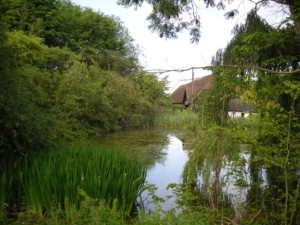Disheartening to realise that it’s been over half a year since i last posted. What happened? It’s hard to say really. I have been busy. I also found myself intimidated by my own expectations – blogging had gone from being fun to an obligation.
It was also winter and a bleak one at that. I hate winter, dread its arrival, count the days till it’s over and every year try to come up with some new strategy to make it more bearable. This winter I promised myself i’d go out regularly to hear live music. I go through phases of going out to gigs and concerts. I get into the habit and then i get out of it.
My problem is the rest of the audience. I love live music but loathe crowds – and bear in mind my definition of a ‘crowd’ is six people.
In the end I did keep my promise and some of the things i went to were truly outstanding, such as the tenth anniversary celebration of Gilad Atzmon & the Orient House Ensemble at the Arts Depot in Finchley. Three sets, including a Charlie Parker tribute with acerbic strings, it was a beautiful marathon of a gig. I had to leave part way through the third set or else I’d have been marooned in North London all night.
Another one to remember was hearing the free jazz rhythm section, William Parker and Hamid Drake at the Vortex in early December with Norwegian sax player Frode Gjerstad. Had to leave that one early because of the snow. Remember the snow? The memory seems almost unreal after this bright, beautiful spring.
Sadly, the problem with writing about concerts is that, unless the event was recorded, you were either there or you weren’t. It’s a different thing from exhibitions where you can often post a photo or two of some of the works on show.
It seems harder to evoke sound in words. Not to mention atmosphere – so important at a concert which, even surrounded by strangers, is a collective experience in a way that an exhibition isn’t.
Music listened to alone is a different thing. What you lose in immediacy you gain in privacy – in the chance to open up fully and individually. Listening to a recording over and over again you unpeel the layers of details of what seemed at first to be an indissoluble whole.
But until you hear music live you can’t fully grasp its capacity for coming to life. A recording is one manifestation of a piece. Each time the music is played it takes on a new life, comes into being afresh.
Take this Sunday morning: Theatre of Voices performed Steve Reich’s Proverb and David Lang’s Little Match Girl Passion. I have both of these as recordings and have been listening to them (obsessively). They are magnificent. Yet on Sunday Theatre of Voices took Proverb to another level. Radiant was the word the festival director used to describe their performance.
I know that at some point I’ll gradually stop attending concerts again. The thought of all those other people will become too much. However, I also know that eventually I’ll start up again. If not next winter, then another winter. Because, much as I dread it, there must always be winter.


